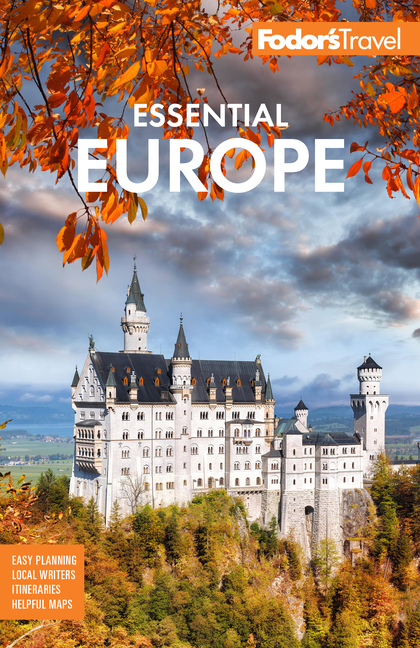Top Reasons to Go to Luxembourg
Enjoy the Architecture
The Kirchberg Plateau is a sea of contemporary skyscrapers, dominated by the Mudam (Grand Duke Jean Museum of Modern Art), designed by I. M. Pei. Around the country, towns such as Esch-sur-Alzette and Grevenmacher have self-guided architectural tours. Grab a map at the Hôtel de Ville (town hall).
Explore the Castles
This tiny country has more than 50 feudal castles of all sizes, ages, styles, and states of repair. Round a bend in a road, or crest a hill, and in front of you looms a feudal stronghold, dominating the surrounding landscape with its squat towers, slender turrets, and massive walls.
Eating in Luxembourg
"French quality, German quantity"—that's an apt and common description of Luxembourg cuisine. Local posted menus tend toward cuisine bourgeoise—veal with cream and mushrooms, beef entrecôte with peppercorn sauce, veal cordon bleu (stuffed with ham and cheese)—all served in generous portions, with heaps of frites (french fries) on the side. Yet this tiny country has its own earthy cuisine, fresh off the farm: judd mat gaardebounen (smoked pork shoulder with broad beans), jambon d'Ardennes (smoked ham served cold with pickled onions), choucroute (sauerkraut), batter-fried whiting, and spicy gromperekichelcher (fried potato patties). More upscale additions to the national specialties are écrevisses (crayfish), cooked with local wine, and all manner of trout.
Go Hiking and Biking
Well-marked, well-maintained hiking and biking trails of all levels crisscross Luxembourg, making it easy to hike or bike from town to railway station to village in the north, or from vineyard to vineyard in the Moselle valley. For a small country, the terrain is quite varied. The Ardennes have rolling hills, while more challenging climbs are found in the Petite Suisse, and the Moselle valley and the Redlands are essentially flat.
Discover the History
You can take a walk through the past in old Luxembourg City, which has been declared a World Heritage Site by UNESCO. Elsewhere in Luxembourg there are sites dating back to the times of the Celts and the Romans. At Dudelange's Mount St. Jean, for example, you'll find a 13th-century bc fortification, a 3rd-century ad Roman fort, and the ruins of a 12th-century ad castle. More recently, Luxembourg was the heart of World War II's Battle of the Bulge; just about every town has some historical marker memorializing the event.
Have a Drink
The best of the Luxembourg wines include crisp Riesling and Auxerrois Blanc, a dry Pinot Gris, a rounder Pinot Blanc, and a rare, rosé-like Pinot Noir. In addition, the sparkling white crémant—Luxembourg's answer to champagne—is excellent either as an aperitif or with dessert. Also popular are the local eaux-de-vie—the fruity quetsch (made from a small blue plum), mirabelle (from a small, cherrylike yellow plum), kirsch, or—for the hard core—grain, which is best mixed in a mug of strong coffee.




